An overview of the most important blackjack points, an introduction to blackjack strategy, card game tips and tricks, and an interactive trainer – we will teach you the basic rules you need to master to play blackjack profitably.
Blackjack Strategy Chart
For everyone in a hurry, we have prepared the right blackjack strategy at simple charts. We distinguish between two different variants of the rules: Dealer draws on Soft 17 and Dealer stands on Soft 17. As a blackjack player, you must play with the right strategy (no matter how many decks you play). How to read the charts is explained in detail below.
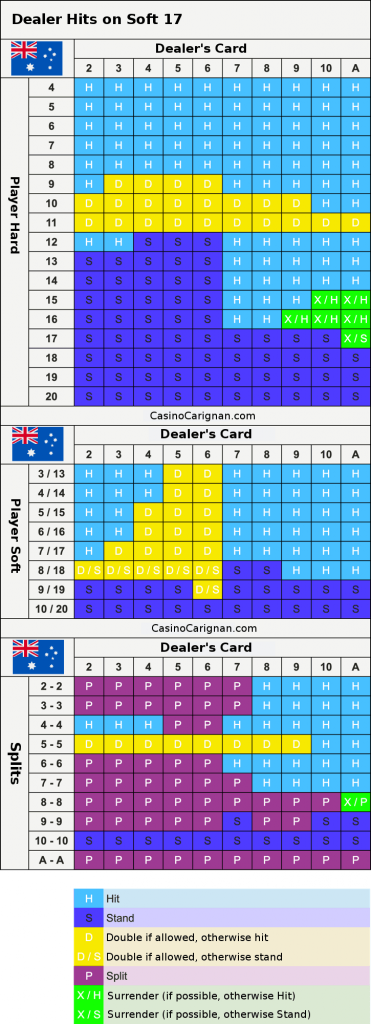 |
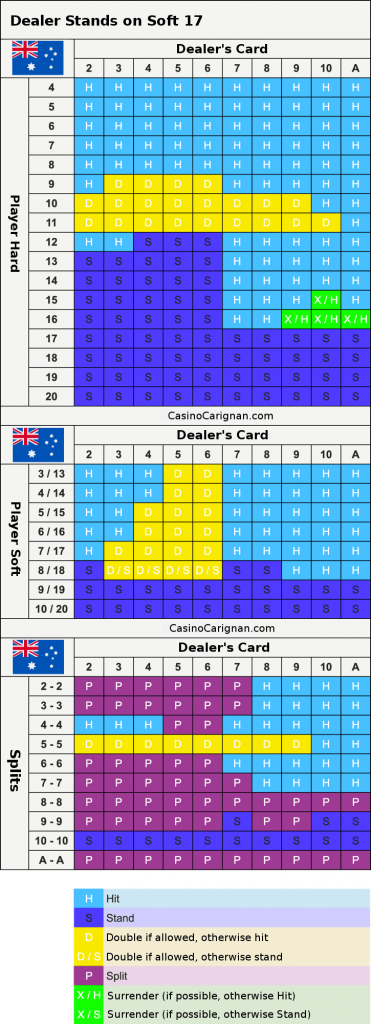 |
How to read these blackjack strategy charts?
The blackjack charts above explain how the mathematically optimal blackjack strategy works.
Which variation is playing?
There are several rules in blackjack that are used in casinos. We distinguish between two main variants of the strategy: the dealer draws on Soft 17 (“Hit on Soft 17”), and the dealer stands on Soft 17. In the first variant, the dealer still has to take more cards if he has, for example, A-6. Depending on this, the player’s strategies differ minimally. Other options (for example, when doubling is allowed, if doubling is allowed after splitting, or when the player can surrender) do not affect the strategy and are already recorded in the charts.
What is the player’s hand?
Hard: A hand without an ace or a hand can only score an Ass than 1 (approximately 8-4 – 12 points or 3-6-4-Ass – 14 points)
Soft: A hand with an Ace in which a card can be rated 1 or 11 (roughly 7-Ass – 8/18 points or 3-2-Ass – 6/16 points).
Pair: A hand with two cards of the same rank (near Dame Dame or 8-8).
What is the dealer’s hand?
The dealer’s first card is always visible in blackjack and is critical to the player’s strategy.
Mathematically Perfect Play
With this information, you can see the mathematically perfect strategy from the chart. The meaning of the individual fields is indicated below the charts.
General Blackjack Strategy Tips
The essential tips for the right blackjack strategy, summarized in simple guidelines:
1. Let the dealer overbuy
Suppose the dealer has 4, 5, or 6, the likelihood that he will lose increases. Therefore, you need to draw cards carefully. As long as you play a soft hand, you do not run the risk of facing the same fate. If the dealer crashes, you automatically win, regardless of your amount. However, you should only double or split if the chart requires it to maximize profits.
2. 17 points in blackjack are always enough
With a solid 17 or better, you should never draw a new card, even if the dealer’s upcard is a ten or an ace. The probability of being overbought is too high. If the dealer has ten points, he will get a very good hand, but the risk of getting 17 on his own is still too high. You prefer a safe strategy here. With 17 points versus the dealer’s 8, you still get a push, even if the dealer draws a nine as the next card.
3. Always split aces and eights, never split tens
The basic rule of division is: aces and eights are divided, tens and sixes are not.
The reason is simple. Ace is the strongest card in blackjack, but two aces add up to only two points. So, you divide to play two hands with the strongest card. Two eights add up to 16; the statistically worst result in blackjack. However, if the eights split, you have a better starting point.
On the other hand, ten is a good base for a hand, but 20 is too strong to risk splitting. If you split the two sixes, you get two hands based on 6. A very poor and weak starting point to play, while 12 is a decent starting position because with the next card, we have a good chance of getting points close to 21, and the only cards we should be afraid of are tens.
4. Never insure
Every time the dealer shows an ace, you have the option to take out insurance. This means that you place an additional bet equal to half of the original bet, and if the dealer has blackjack, this additional bet pays 2 to 1. Mathematically, insurance is always an awful decision that only increases the house edge.
5. Learn the strategy by heart
If you plan on playing blackjack at a live casino, take some time to memorize the strategy charts. When you play our mathematically perfect strategy, you significantly reduce the house edge. If you play online blackjack, you can open any tables and look at the strategy chart simultaneously, but taking the printed strategy chart with you to the casino is a bad idea. Casinos don’t like it when you squeeze the casino edge. Below you will find a blackjack trainer with whom you can practice your strategy effortlessly.
Practice Blackjack Strategy
Open the blackjack strategy chart in a new window (for example, for our blackjack game, use “The dealer is on Soft 17”);
Now start our blackjack game described above and start playing – make all your decisions based on the strategy chart;
Over time, you will be able to read and apply the strategy diagram better and faster. You will be more prepared to play online blackjack for real money. With the strategy chart, the house edge is reduced from 5% to 0.5%, so there is no reason not to use this.
If you continue to play blackjack this way, you will be able to memorize some or all of the strategy chart. In itself, it is good brain training and gives you the best odds of winning at online blackjack.
What results can you get with our blackjack strategy?
Correct use of basic blackjack strategy reduces the house edge from 5% to less than 0.5%.
Blackjack is one of the casino games with the lowest casino edge. But this only applies if you are playing with the most advanced strategy. How big the house edge depends on the casino’s specific rules, but in most cases – if the player plays perfectly – the casino only has a house edge of 0.25 to 0.45 percent.
Casinos rely on players who don’t know exactly how to play blackjack and who make mistakes, big or small. The average player who plays without a mathematically designed strategy will make statistically incorrect decisions here and there – for example, not share when necessary, double when not, and the like. Only such small deviations from the ideal blackjack strategy give the casino a higher edge.
For example, weak players still draw more cards with 17 points because they have “feeling” – give the casino a house edge of more than 5 percent.
However, with our strategy, you can be sure that the casino will have the lowest possible edge.
Tip:
If you have a choice, always play the variation where the dealer should have Soft 17. This option initially gives a house edge of 0.2% lower.
Can you beat the casino at Blackjack?
Attention! You cannot beat the casino at Blackjack in the long run with just a basic strategy.
Casinos have spent a lot of time developing a blackjack game so that no player can beat the casino with a simple strategy. With live casinos, it is possible to beat the casino using a sophisticated card counting method. This strategy is much more complicated than our basic strategy and comes with certain casino conditions—more on this below.
Especially online, it is impossible to use the card counting method, and in online casinos, you will always lose at blackjack in the long run.
However, the casino edge in blackjack in online casinos is also extremely low, and in the long run, it is possible to score almost plus or minus zero. If you’re lucky, you can win money in the short to medium term.
Mathematically, a house edge of 0.4% means that you will lose your average bet for every 200 blackjack hands played in the long run. It’s much better than most other casino games.
Find the Best Online Blackjack Casino
 |
Bonus: $10000 |  |
 |
Bonus: 250% on your first deposit |  |
 |
Bonus: $1000 |  |
The best blackjack strategy will fail if you play at a bad casino.
Almost every online casino offers different blackjack options. Often they differ only in small details, but these small details can make a big difference. There are usually different options:
| Advantageous variation | Disadvantageous variation | Difference in house edge |
| Dealer stands at Soft 17 | Dealer draws on Soft 17 | 0,20% |
| Double after split allowed | No doubling after split | 0,14% |
| Doubling allowed on all two cards | Doubling allowed only at 10-11 | 0,19% |
| Splitting aces again allowed | Splitting aces again is prohibited | 0,07% |
| Late surrender allowed | Late surrender prohibited | 0,08% |
| Blackjack pays 3:2 | Blackjack pays 6:5 | 1,36% |
Payout Percentage
The most important option is the blackjack payout percentage. Always make sure the payout is 3:2, not 6:5.
All blackjack options offered by reputable online casinos payout 3:2, and most casinos have a Soft 17 dealer. This means that you always have very good online odds and the house edge is very close to zero.
These are the best online casinos we have tested, and we recommend that you play at one of these casinos:
Best Blackjack Casinos
 |
Bonus: $4000 |  |
 |
225% Welcome Bonus |  |
Blackjack Money Management – The Blackjack Bankroll
Over and over again, people make the following rookie mistake: they go to the casino for the first time and have a lot of money in their pockets. Then they allow themselves to get infected with the atmosphere, play too much, too long, and too carelessly, and suddenly all the money is gone. Some even decide to squander money. But this is the worst thing you can do. Instead, we recommend that you only allocate a certain amount to the casino. The total amount of money that you are willing to invest in is your “bankroll.”
There are several factors to consider when deciding on your bankroll size. The starting bankroll is the amount of money you set aside for your hobby. This amount should be high enough to guarantee the game’s long-term enjoyment, but not so high that you lose your money financially. The most important rule of thumb in the game is only playing for as much money as you can lose. Before you start playing, you should always think about your bankroll size to not make a serious mistake.
The starting bankroll depends on your financial circumstances. The advantage of online casinos is that you can play for much less money than in real casinos. Minimum bets between two and five are usually the minimum in blackjack, while online, you can also play for a few cents.
Counting Cards in Blackjack
Counting cards is an established way to gain an edge over the casino. However, this is not for beginners. Counting the cards is based on a simple principle: cards are divided into three groups, in which either positive, negative, or no scores are counted. If the deck “overheats,” that is, when it reaches a specific value when counting, the player’s chances of winning increase, and then he increases the rates.
That’s it in a nutshell. The principle sounds simple, but this is not because you need to constantly keep all the cards on the table, quickly grasp and memorize. The players who have made large sums of money with this system are usually highly educated scientists, and this is no coincidence.
If you’re interested in card counting, head over to our guide to card counting in blackjack or watch the movie 21. One last but important note on this matter. Counting cards works and is not illegal, but the casino will punish you and put you on a blacklist if found.
Detailed instructions on how to count cards in blackjack
Blackjack Betting Systems
There are several betting systems, and players around the world prefer different systems. However, they all have one thing in common: they do not offer guaranteed returns. The illusion of control is much more inherent in systems. Whether it’s Martingale, Paroli, or 1-2-3-6, no system will beat the casino in the long run. But you can still play with these systems. We want to introduce the most important blackjack systems here briefly.
Positive-progressive or negative-progressive betting systems
The difference between positive and negative progressive betting systems is pretty simple. Both betting systems are based on whether the previous hand was won or lost.
Positive Progressive Betting Systems: This type of betting system recommends increasing your bets every time you win and decreasing them every time you lose. Its conceptual idea is that you can maximize profits when a lucky fairy is on our side.
Negative-Progressive Betting Systems: In contrast, negative-progressive betting systems are based on the principle of recovering lost money by further increasing risk after a loss.
Paroli System
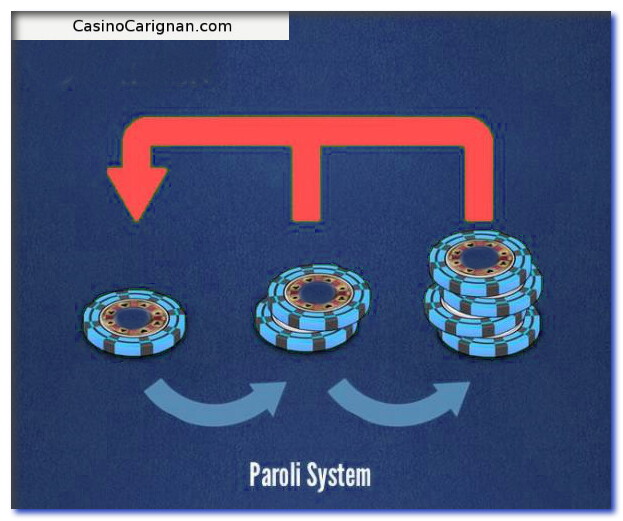
The Paroli system is very useful for playing blackjack to minimize losses and maximize wins. If you play the Paroli strategy, keeping track of your game is also much more manageable. The Paroli system is a positive progression betting system. This means: if you win, you bet more. If you lose, you bet less so you can take advantage of your streak.
Simply put, you double your stake every time you win. Once you lose, you will be returned to the bet you placed at the beginning. Many players set a win limit for themselves in the Paroli system because if you lose after winning several bets, you will lose everything. A good strategy is to start with the first amount after winning three hands.
Example: If you bet $5 at the start of the game and win, you bet $10 the next round. If you win too, you bet $20 next. And if you win again, you go back to the start and bet $5 again. This way, you can make some profit in the short term and have fun at the same time.
Martingale System
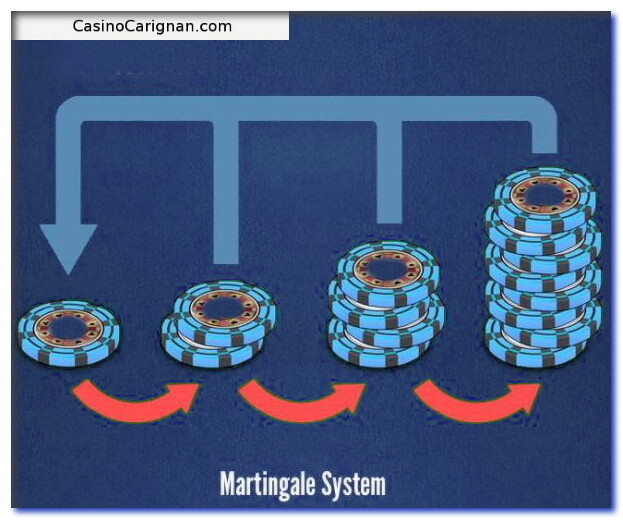
The Martingale betting system is a negative progression system. Unlike positive-progressive play strategies, you double your bet if you lose. This is useful for making up for your blackjack losses in the long run.
The minimum should be set first. The more often you lose, the more you double your bet. Of course, this comes with a risk: if you lose over and over again, you certainly won’t get any short-term gain.
On the other hand: when the time is right, you win very little! Therefore, many players take the risk of opting for this aggressive betting system.
1-3-2-6 System
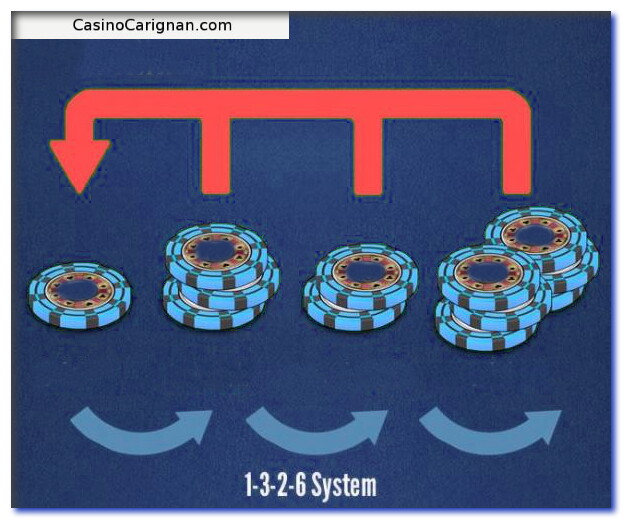
Many betting systems, such as Parlay System and Martingale, seem to be too aggressive and risky. This may seem a little daunting at first, but as you will see shortly, the system is very easy to learn.
The numbers in the name of this gaming system already tell us how to place our bets. First, we define our unit – most often, this is the lowest bet, for example, $5. We multiply the base bet one by one by factors of 3, 2, and 6. But be careful: this only applies if you win! Thus, if you lose three bets in a row, you will only place one unit until you win. If you lose in the middle of a 3-2-6 loop, you are back to the beginning. Of course, as soon as you finish the cycle.
The whole process can be better understood with an example. If we were to play with a unit of $10, then according to this system, we would first bet $10, then $30, then $20, and finally $60 – provided that we win every round. Once the sequence is over, you are returned to your initial $10.
Parlay System
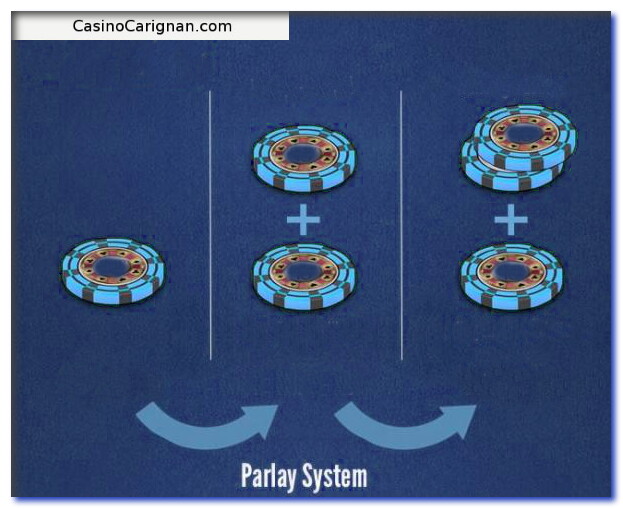
Like the Martingale system, the Parlay system in blackjack is incredibly risky and aggressive. This is because you double your bet after each round. This means that whatever you win comes back into the game. Thus, you can lose even high profits very quickly in the long run.
Thus, it is not a bad idea to set a cap in Parlay. So, once you’ve won a certain number of bets, you stop doubling your bets and go back to the beginning. Unfortunately, most people using Parlay as a system lose precisely because they don’t set this limit and lose all their winnings in one fell swoop.
How high this limit should depend on your preference. However, the line must be drawn realistically: if you start at $10 and double it for too long, you will later regret it. Therefore, you must have an acceptable limit. Likewise, you should take into account the loss limit in blackjack in the Parlay system. You don’t want to lose your entire bankroll in one session! The bet limit is the number of losing bets after which you stop.
Fibonacci System
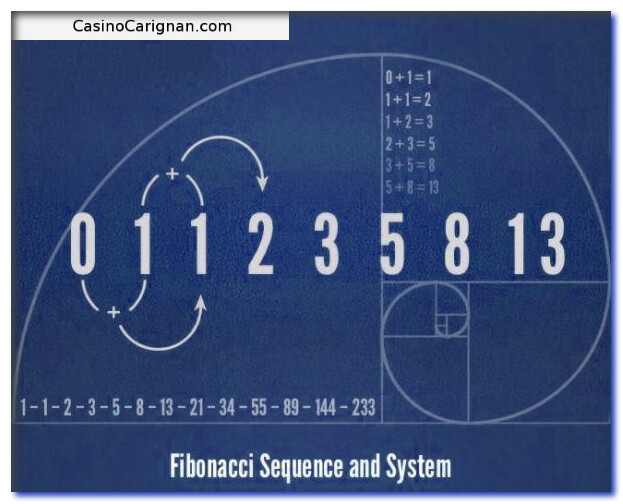
The so-called Fibonacci sequence is very ancient and was described by an Italian mathematician in 1202. It is a constant sequence of consecutive numbers. It starts like this:
0, 1, 1, 2, 3, 5, 8, 13, 21, 34…
As you can see, each number in the Fibonacci sequence is the sum of the previous two numbers. This sequence can create a practical betting system that can also be used in blackjack games. The Fibonacci betting system is very simple and straightforward. The player starts with one, which he determines himself – usually, the minimum of the table is suitable for this. Let’s say it’s $5.
Each time the player wins, he wagers more money on the next bet according to the sequence. And here’s what it looks like at the blackjack table:
- Hand 1 – #1 Bet ($5) – Win
- Hand 2 – #1 Bet ($5) – Win
- Hand 3 – #2 Bet ($10) – Win
- Hand 4 – #3 Bet ($15) – Win
- Hand 5 – #5 Bet ($25) – Win
Because it is so simple and not explicitly designed for the blackjack table, many critics consider this system imperfect. But despite its versatility, the Fibonacci system has its advantages in the game. As with the other examples above, this is positive progress where you don’t raise your bets until you win.
But, unlike many extreme options, with this system, the player is not forced to double his bets and thus risk all his winnings, but always keeps a small part of his winnings. This gives the player maximum impact on their bankroll without having to think too much about it. On the other hand, the big drawback, as you can see from the sequence, is that you need at least five consecutive wins to get really big wins. This is a pretty serious obstacle.
Arnold Carignan | November 3, 2020 | Last Updated on: May 24, 2023
